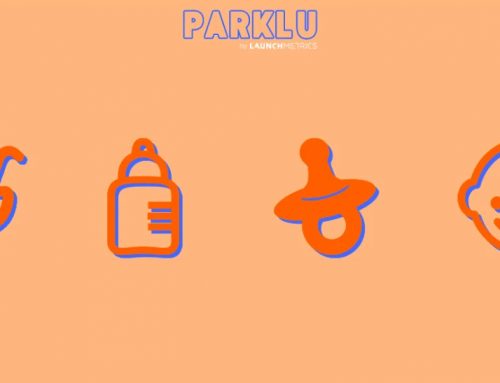Video-sharing app Douyin (known as TikTok outside China) is trialling a new function that allows users to perform in-video search. Some observers have raised concerns about how in-video search function, combined with the facial recognition technology built into the system, could be detrimental to users’ privacy. Marketers, meanwhile, will be keenly observing the ways Douyin users respond to in-video search, anxious to take advantage of the opportunities the function’s implementation presents for brands while they do influencer marketing on Douyin.
Chinese tech watcher Matthew Brennan alerted his Twitter followers to Douyin’s innovation in a tweet on 23 September. Brennan accompanied his post with a demo video showing a Douyin user applying the in-video search function to dig deeper into—and beyond—a video posted on the platform by Chinese comedian Xiao Shenyang.
In-video Search Applications: Search Objects & Faces
The new function has two main applications. First, and more obviously attractive for brands, Douyin users can utilise in-video search to highlight an object within a video and perform a search for that item. The app will throw up links that users can follow to online stores where they can purchase the item.
In-video search also allows users to highlight and search the platform for the face of a person within a video. Douyin’s facial recognition technology will trawl the platform, gathering other videos featuring that person to serve up to the user. Thus, a user could stumble upon a KOL’s video, not knowing who that KOL is, then use in-video search to identify the influencer and uncover other content they have created or appeared in.
The video Brennan posted to Twitter suggested that the in-video search function delivers results smoothly and speedily—almost instantaneously, in fact. However, the function remains in a testing phase, and in-video searches are only enabled within certain videos. The new in-video search capability is also currently only available within Douyin’s Chinese app, not on TikTok.
Douyin’s innovation builds on existing visual-based search technology, but this is the first time a tech company has publicly tested a video-based search function. In the West, Google Lens enables users to scan real-world scenes or still images to identify objects or find similar images, including suggestions of where to buy items. On Taobao, shoppers can snap a photo of an unknown product and the platform will dig up stores selling the item (or similar items). Chinese search giant Baidu also has its own in-photo search function. Meanwhile, Weibo’s live-streaming platform Yizhibo and video app Bilibili have launched content-to-commerce integration with Taobao this year.
Opportunities for Influencer Marketing on Douyin
The ability to search within a video is unquestionably a major breakthrough, and as Douyin rolls out and refines the technology, other platforms will surely follow suit and add their own adaptations. So what changes will in-video search bring to e-commerce, social marketing and especially the KOL dimension, and how can marketers get out in front and adapt their own strategies esp when it comes to influencer marketing on Douyin?
First, the in-video search will bring a profound shift in the way social media users interact with video content. With the new technology, each video, and each person or object featured within becomes an entry point to another realm of relevant content. In this context, the Douyin-watching consumer’s journey from the first sight of a product to purchase becomes shorter than ever.
If each appearance of a product on screen creates an opportunity for a sale, well-considered product placement will become an increasingly potent tool in the marketer’s arsenal. At present, there’s arguably less tangible value for a brand in having their products appear on the screen as a prop or part of the scenery in those viewers who don’t know what the product is can’t take any action. In contrast, brands happily pay KOLs to endorse their products on-screen, placing the product front and centre. Brands will likely continue to prize this form of KOL endorsement, but in-video search transforms the value of product placement. With in-video search, anything that catches a viewer’s eye becomes the main attraction, leading to conversions. In this new paradigm, every second that a product appears on screen will be valuable to the brand.
This will change the way that videos are planned, shot and edited. Data about consumer behaviour will feed into new conventions about what it takes to achieve a sale: optimum placement within the shot; ideal length of time a product should appear on screen at one time; whether multiple short appearances dispersed throughout a video are more effective than long, lingering product shots; at what point a viewer is most likely to proceed from search to purchase. Brands will need to wait and see how this shakes out but should be proactive about conducting research on how they can optimise video planning to yield greater sales when they do influencer marketing on Douyin.
In-video search could also broaden the scope of KOLs that a brand chooses to work with. In the past, for example, it made less sense for a menswear brand to seriously target cooperation with a KOL whose content is focused on consumer electronics. No matter how many millions of followers that KOL has, the act of them simply wearing the menswear brand’s product in a video is unlikely to inspire their followers to seek that garment out and purchase it. However, if the KOL’s millions of followers simply need to see the garment, search in-video and click through to an online store, brands could be incentivised to cross category lines when doing influencer marketing on Douyin.
In this new landscape, brands could be tempted to believe that the more videos they appear in, the more sales they can make. Product seeding may indeed become even more important as a tool, and marketers may find themselves working with a wide range of KOLs to achieve different levels of exposure: some KOLs for prominent features, others for simple product placement. Brands will want to evaluate a KOL’s followers not just in terms of size of the following and demographic information, but also in terms of user intentionality: How likely are a KOL’s followers to make a purchase? What does it take to inspire different groups of KOL followers to make a purchase? Is widespread product seeding worth the effort for the return it brings?
As well as considering the front end—getting their products into videos—marketers will also need to cultivate the back end. That means that when a Douyin (or other platforms) user searches for a product within a video, the brand has to make sure there is somewhere for the user to go. Brands will need to cultivate relationships with online stores and launch their own stores or risk losing out on sales. The platform could also take on a gatekeeper role because brands will want to make sure that their stores and products appear most prominently. Platforms will monetise this in the way that search engines have monetised paid search.












Leave A Comment